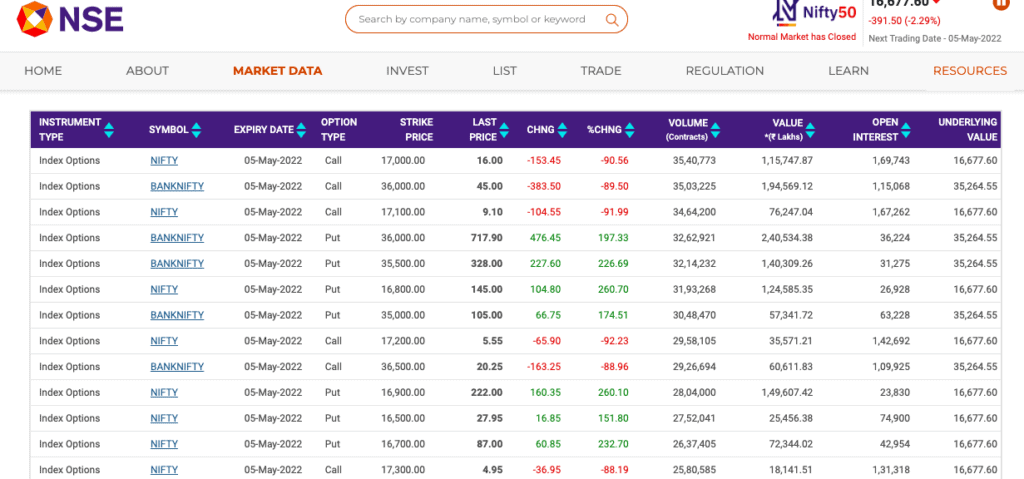There are plenty of videos about Option selling as one of the safest ways to make consistent money from the stock market. The question is, is it true, and can everyone do it? In this post, I will share everything you need to know and understand before you even think about option selling and how to make it profitable.

What is Option Selling?
Option Selling means that rather than buying options, you choose only to sell options as your trading strategy. For example, if you expect the market or index to go up in the near term, you decide to sell put options rather than buy call options (like most retail traders do).
The issue here is that Option Selling requires a higher margin and a different trading style. Also, it has limited profit potential and higher risk. We will look into all these aspects in this post. Keep reading.
Why Option Selling is the better way to make consistent money
Trading is a game of probability. When you trade on your trading system, there is always a probability of your trading going in profit or loss. So, when you work on your trading system, you increase your probability of being profitable.
When you buy an Option, you get your profit only when the momentum of the market is in your favor. In comparison, your option will lose value if the market is at the same level or if it goes against you. This means the probability of success is 33% when you are an option buyer.
Whereas Options Selling is more profitable as compared to option buying. Because you are profitable in two out of three scenarios.
Three Scenarios of the stock market
Scenario 1 – Bull Market
Scenario 2 – Bear Market
Scenario 3 – Consolidating market (70-80% of times market is in this zone).
Money-making scenarios of Option Selling
Scenario 1: When the market moves in your direction.
It’s a no-brainer, you sell a put, and the market moves up. Puts lose money, and you are in profit.
This scenario is true even if the market moves slowly in your direction. Because even if the market or the stock is staying at the same levels, you will make money, as explained in scenario 2.
Scenario 2: When the market or the stock doesn’t move (consolidating)
This is the most common scenario. You see a move, you enter a trade, and the stock or the market keeps moving in a range. Most traders lose patience after waiting a few hours or even days for the trade to move in their direction.
But, as an option seller, you are in a sweet spot here. Because even when the stock price is not moving, the option prices lose time value.
So, you see, in option selling, you have two out of three market scenarios working in your favor.
How to start in Option Selling
With the word Option Selling, it seems as if the only thing you need to do is to sell the option rather than buy it.
But, in reality, it’s not this simple. And the reason is the risk factor involved in selling an option.
What is the risk factor in Options Selling?
When you sell an option, you are expecting the premium of that option to go down. For example, if you sell a bank nifty option at a premium price of ₹ 230, you expect the price to go down below 230 (ideally as close to zero as possible).
This means the maximum profit you can earn from this trade is 230*25 = 5750/-. Whereas, if the premium price rises above 230, you will start losing money on this trade.
Thus, the main risk in the Options Selling trading style is that the profit side is limited but the losing side is theoretically unlimited.
The question here is, then why are options selling still considered to be a more consistent and profitable way to earn money in trading?
The reason for this is simple – as mentioned above – the probability of you being right and ending up in profit is higher in selling options than buying options. But, this depends on the trading strategy you decide to use for your option selling strategy.
Here in the next part, we will discuss the same –
Popular and effective trading strategies for Option Selling
Options selling trading strategies can be divided into two broad segments:
- Hedging based Options selling – for risk-averse traders
- Direction Option Selling – for discretionary traders
Hedging-based Options Selling Strategies
Heding-based Options Selling strategies are also called neutral trading strategies. These strategies are not concerned with bearish or bullish views about the market.
Instead, these strategies are focused on a range of instruments. In the Indian Stock market, these strategies are mainly used for Index Options ( Nifty and Banknifty).
Most Popular hedged option selling strategies
- Straddle
- Strangle
- Butterfly
Directional Options Selling Strategies
Discretionary traders do Options Selling based on their view about the market movement. For those who don’t know, a discretionary trader is one who trades based on his view of the market. When you trade by looking at chart patterns (technical analysis), that is discretionary trading.
So, if the view about the market is bullish, then put option selling is done and if it’s bearish, then call option selling.
Thus directional option selling is similar to what we hear about trading in general. You trade based on your observation of the market. The most popular way of doing such option selling is to sell options using support and resistance levels.
How to choose the right strike for Option Selling
When you buy an option, your only total risk is the premium you paid for buying that option, so you can simply buy an option based on a near enough strike and as per your trade capital.
Whereas in the case of Option Selling, if you choose the wrong strike to sell, then risk can increase exponentially. So, choosing the right option strike to sell is very important for an Option Selling based trading strategy.
The most common method of choosing the Options strike to sell is to use support and resistance levels. This means that if you are selling a call option, you sell the strike either at the resistance level or just above the resistance level.
How much capital is required for selling options (Banknifty and Nifty)
As when you sell an option, profit is limited but chances of loss are unlimited, the margin required for selling an option is quite high. As per the Zerodha margin calculator, the margin required for selling a single lot of Banknifty option is around ₹ 1.43L.

This is an approximate figure, depending on the volatility of the overall market.
How to reduce the margin required for selling index options
As you just noticed, the margin requirement for selling 1 lot of option is nearly equal to trading in 1 lot of futures. Now, if we compare this to the margin required to buy 1 lot of option, the difference is quite high.
The reason for the same is that when you buy 1 lot of option, you only pay the premium for that option. For example, let’s say, the BankNifty option of 43000 strike is trading at price ₹ 200, then to buy 1 lot of this option will be
25(size of 1 lot of Banknifty)*200 = ₹ 5000 only.
Whereas to sell the same, you will need around ₹ 1.4L of margin amount in your trading account.
